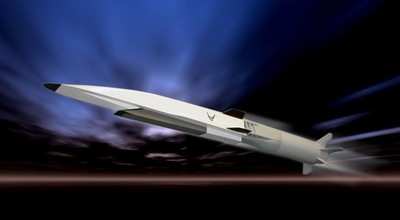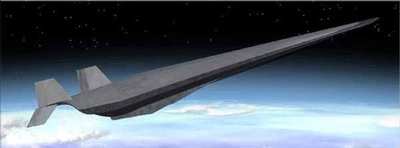Russian Toward Hypersonic Flight
Founded in 2021 by Russian physicist and serial entrepreneur Mikhail Kokorich, Destinus is a European startup about the highly-aspirational endeavor of developing a hypersonic hydrogen-powered passenger aircraft.

Destinus unveiled its third and most complex and capable technology demonstrator during the grand-opening of 2023’s Paris Air-Show. Kokorich and his apparatchiks assert the contraption—prosaically dubbed Destinus-3—is set to go down in aviation history as the world’s first hydrogen-powered supersonic unmanned vehicle.
Slated to get underway in 2024, flight-testing of the allegedly Mach 1.3-capable Destinus-3 will serve, ostensibly, to validate technologies salient to the development, testing, certification, and fielding of the Destinus-S, a machine touted by its conceivers as humankind’s first commercial hypersonic passenger aircraft.
Kokorich and his boffins contend the Destinus-S will be certified between 2030 and 2032, accommodate 25 passengers, and have a cruising speed of Mach 5.0. Under ISA conditions, Mach 5.0 equates to approximately 3.334-knots—a velocity more than twice Concorde’s maximum speed and a clip at which journeys from New York (JFK) to Paris (CDG) would barely span 1.5-hours.
Long on ambition, Destinus plans to introduce an even more superlative aircraft—the Destinus-L—in the 2040s. Subject machine would transport three-to-four-hundred passengers at speeds of up to Mach 6.0—thereby rendering all Earthly destinations accessible within three hours. Destinus intends to power and cool the engines of its L-model with cryogenic hydrogen—nasty stuff prone to fire and explosion, and wont to occasion asphyxiation and cryo-necrosis in humans.
Following successful flight-tests of two earlier demonstrators and rigorous ground and flight-testing of its hydrogen propulsion scheme, Destinus is making ready to shakedown its ten-meter, two-ton Destinus-3. The full-scale demonstrator is motivated by the company’s proprietary hydrogen afterburner technology and a novel autopilot system.
Destinus founder and CEO Mikhail Kokorich stated: "The propulsion system for Destinus-3 will incorporate a kerosene-fueled turbojet engine in conjunction with a liquid hydrogen-fueled afterburner. We're also developing plans to trial a fully-hydrogen-based system for both turbojet and afterburner.”
Mr. Kokorich added: "The demonstrator is equipped with a liquid hydrogen tank and an innovative feed system that features an electric pump. Destinus-3 is on track for its inaugural subsonic flight in early 2024, with supersonic flight campaigns to follow in late 2024."
Destinus’s hydrogen afterburner technology was flight-tested in May 2023 on the company’s four-meter Destinus-1 Jungfrau (German-virgin) and ten-meter Destinus-2 Eiger (a mountain in central Switzerland). The two demonstrators reportedly validated a hypersonic airframe architecture based on Terence Nonweiler’s waverider concept—a hypersonic aircraft design that makes use of shock-waves generated by its own passage through the atmosphere to improve its supersonic lift-to-drag ratio—a phenomenon known as compression lift.

General Michel Friedling, former commander of the French Space Command and member of the Destinus advisory board, set forth: “Hypersonics will revolutionize aviation technology and usage in the 21st Century. It is vital for Europe to remain a leader in the aeronautical field, and not miss this turning point that the U.S.A., China, and Russia are preparing.”
Philipp Rösler, former German Vice Chancellor, Minister of Economics and Technology, and current Destinus advisory board member, opined: "It's noteworthy that the hypersonic propulsion technologies developed by Destinus are based on the use of hydrogen. This underlines, once again, the unique role of hydrogen as the fuel of the future for aviation.”
With a heat of combustion three-times higher than that of kerosine and exceptional cooling capabilities, hydrogen is broadly considered the optimal choice for powering robust, efficient, combined-cycle engines. Such powerplants include turbojet and ramjet components for subsonic and supersonic flight respectively.
 ANN's Daily Aero-Linx (12.03.25)
ANN's Daily Aero-Linx (12.03.25) ANN's Daily Aero-Term (12.03.25): CrewMember (UAS)
ANN's Daily Aero-Term (12.03.25): CrewMember (UAS) NTSB Prelim: Maule M-7-235A
NTSB Prelim: Maule M-7-235A Airborne-Flight Training 12.04.25: Ldg Fee Danger, Av Mental Health, PC-7 MKX
Airborne-Flight Training 12.04.25: Ldg Fee Danger, Av Mental Health, PC-7 MKX Aero-News: Quote of the Day (12.04.25)
Aero-News: Quote of the Day (12.04.25)




